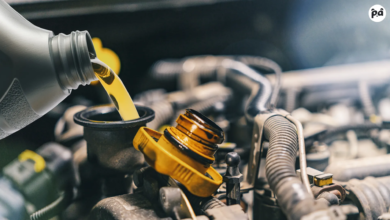The Complete Guide to Floating Navel Piercing Everything You Need to Know

Body piercings are not just a form of personal expression, but also a way to enhance one’s style and individuality. While traditional belly button piercings have been a favorite for many years, a new type of navel piercing has begun to capture the attention of those looking for something more unique and bold: the floating navel piercing. This guide delves deep into the floating navel, discussing its unique characteristics, the process of getting one, its care, and everything else you need to know before making the decision to get pierced.
What is a Floating Navel Piercing?
A floating navel is a variation of the traditional belly button piercing, but with one key difference: instead of going through the navel itself, it’s placed above the navel, often through the skin directly above the belly button. This type of piercing does not go through the cartilage or the skin directly on top of the navel, but rather around it, giving the jewelry a “floating” appearance.
In terms of aesthetics, the floating navel is distinct because it creates the illusion that the jewelry is hovering above the navel rather than being anchored through the belly button. This unique positioning not only makes it visually appealing but also creates a more customizable approach to body art. Many people find this piercing to be a fantastic way to add an extra bit of flair without going for the traditional belly button look.
The Popularity of Floating Navel Piercing
The floating navel is becoming increasingly popular among people who are looking for something different from the conventional belly button piercing. It stands out because of its minimalist yet striking design, which appeals to those who want to express their individuality in an unconventional way.
Another reason for its rising popularity is the fact that it offers a fresh approach to navel piercings while still keeping the beauty and elegance associated with them. Since it doesn’t penetrate the navel, it gives individuals an opportunity to sport something new and trendy without sacrificing the aesthetics of their body.
Why Opt for a Floating Navel Piercing?
If you’re thinking about getting a floating navel piercing, it’s essential to understand the benefits of this piercing type. Below are some reasons why people are opting for this unique piercing style:
1. A Unique Aesthetic Choice
A floating navel is a distinctive choice for body modification enthusiasts who want to stand out. Traditional navel piercings are common, but a floating navel offers an unconventional and eye-catching alternative. By positioning the jewelry above the navel, this piercing provides a different visual effect, making it an excellent choice for those who want something out of the ordinary.
2. Less Risk of Rejection or Migration
One of the key advantages of a floating navel is that it has a lower risk of rejection or migration compared to traditional belly button piercings. Since the piercing doesn’t go through the navel itself, it’s positioned in a way that makes it less likely to be rejected by the body. This positioning can be beneficial for individuals who may have experienced complications with other types of piercings.
3. More Versatile Jewelry Options
The floating navel gives you the freedom to experiment with different styles of jewelry. With a traditional belly button piercing, you’re typically limited to the standard curved barbell. However, with a floating navel, you can use various types of jewelry, including straight barbells, captive bead rings, and other unique designs, making it a more customizable piercing.
4. Less Scarring
Because the floating navel piercing is placed on the skin above the navel, it often results in less scarring compared to traditional piercings. If you follow proper aftercare, there’s a reduced chance of developing excessive scar tissue, making the healing process smoother and less invasive.
The Piercing Procedure: What to Expect
Getting a floating navel is a straightforward process, but it’s important to understand the steps involved and what you can expect during the procedure. Below is a breakdown of the process:
Step 1: Consultation with a Professional Piercer
The first step in getting a floating navel is to consult with a professional piercer. During this consultation, the piercer will evaluate your anatomy and discuss your desires and preferences. Not everyone’s body is suited for a floating navel, so it’s essential to ensure that you’re an appropriate candidate.
If the piercer deems that the floating navel will work for you, they will proceed with the next steps.
Step 2: Marking the Piercing Area
Once the consultation is over, the piercer will mark the exact spot where the piercing will be placed. This is done with a sterile, skin-safe pen to ensure the correct placement. It’s important to ensure the mark is in the right position because a floating navel piercing should align perfectly with the natural contours of your body.
Step 3: Piercing the Skin
Using a sterilized needle, the piercer will carefully make a hole in the skin above the navel. It’s important to note that a professional piercer should perform this procedure to minimize the risk of complications, as improper technique can lead to infection, scarring, or improper healing.
Once the hole is made, the piercer will insert the jewelry. Most commonly, a curved barbell is used, but this can vary depending on your preferences.
Step 4: Aftercare Instructions
After the piercing is completed, the piercer will provide you with a set of aftercare instructions. These instructions are essential for ensuring the healing process goes smoothly and that the piercing doesn’t get infected. Proper aftercare is crucial to a successful floating navel, so make sure to follow these instructions carefully.
Floating Navel Piercing Aftercare
Proper aftercare is the most important factor in ensuring your floating navel heals correctly and stays infection-free. Here are some tips to care for your piercing:
1. Clean the Piercing Regularly
Cleaning your piercing is essential to prevent infection. Use saline solution or an antibacterial piercing solution to clean the area daily. Avoid using alcohol or hydrogen peroxide, as these can irritate the piercing and delay healing.
2. Wash Your Hands Before Touching the Piercing
Always wash your hands thoroughly before touching your piercing. This will prevent bacteria from transferring to the piercing site and causing infections. Avoid unnecessary touching of the jewelry during the healing period.
3. Wear Loose-Fitting Clothing
It’s important to wear loose-fitting clothing, especially around the area of the piercing. Tight clothing can cause irritation, friction, or pressure, which could lead to discomfort or complications in the healing process. Opt for soft, breathable fabrics to avoid irritating the piercing.
4. Avoid Water and Swimming Pools
While healing, it’s important to avoid swimming pools, hot tubs, and other bodies of water. Bacteria in water can increase the risk of infection, so wait until your piercing has fully healed before engaging in these activities.
5. Be Cautious While Sleeping
If you are used to sleeping on your stomach, be mindful during the healing process. Try to avoid putting pressure on the piercing, as this can cause discomfort or affect the healing time. You can use a pillow to cushion your body and prevent direct contact with the piercing.
6. Monitor for Infection
Keep an eye on the piercing for any signs of infection, such as increased redness, swelling, excessive pain, or discharge. If you notice these symptoms, seek advice from your piercer or a healthcare professional.
Healing Time and What to Expect
The healing process for a floating navel piercing usually takes between 6 months to a year, depending on how well you take care of the piercing and your body’s ability to heal. Some people may experience faster healing, while others may require more time. During the healing period, it’s essential to avoid changing the jewelry too soon, as this could irritate the piercing and extend the healing time.
Risks and Complications to Consider
While the floating navel is a relatively safe procedure, there are some risks associated with it, as with any body piercing. Some potential complications include:
1. Rejection and Migration
Like any surface piercing, floating navel can sometimes be rejected by the body. The body may push the jewelry out, especially if the piercing is not placed correctly or if it is not cared for properly.
2. Infection
Infection is one of the most common risks associated with any type of piercing. If the piercing is not cleaned properly or if it is exposed to bacteria, it can become infected, leading to pain, swelling, and discharge.
3. Scarring
Improper care or the piercing becoming infected can lead to scarring. It’s crucial to follow aftercare instructions carefully to minimize the chance of scar tissue forming around the piercing.
Conclusion
A floating navel piercing is a unique and stylish way to enhance your body art collection. Whether you’re drawn to it for its aesthetic appeal, versatility, or its lower risk of rejection, this piercing can be an exciting addition to your personal style. With proper care and attention, it can heal beautifully and add a distinctive touch to your overall look. If you’re considering a floating navel, make sure to consult with a professional piercer, follow all aftercare instructions, and enjoy your new, eye-catching body jewelry!
kevin j. anderson veiled alliances A Prequel Worth Discovering



